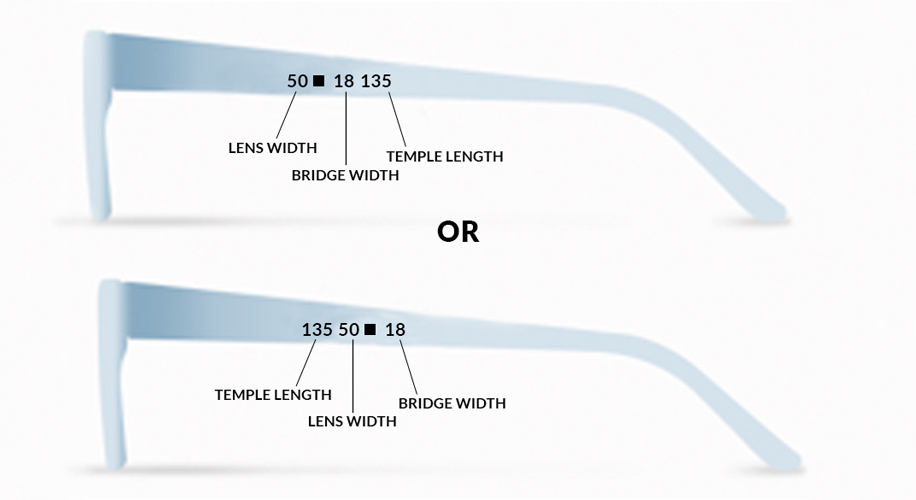How to Measure an Eyeglass Frame
- BY Dr. Mori Goodyear
- IN How To
We updated this post on May 5, 2023, to include a new way to measure eyeglass frames.
Your prescription has changed and you need a new pair of eyeglasses. Instead of paying $400 at your local optometry office or optical shop, you decide to check out Zenni where glasses start at $6.95.
If you’ve never shopped for glasses online, you’ll need to prepare yourself with a few crucial items: an updated prescription, a pupillary distance (PD) measurement, a millimeter ruler, and a current pair of eyeglasses or sunglasses that fit you well.
Your prescription and PD will usually come from your eye doctor (or you can learn to measure your own PD here), but figuring out your frame measurements will take a few extra steps.
Don’t worry! We are going to share some tips and tricks that will help you find the perfect fitting frame.
Here’s how to measure each part of your frame:
| Measurement | Description |
|---|---|
| Measure horizontally across the frame from hinge to hinge. | |
| Measure the distance between the lenses at the closest point. For the bridge, stick to a range of 2mm less or more than the measurement. | |
| Measure from the hinge to the bend and then from the bend to the end of the arm. Add the two measurements together for the total temple arm length. | |
| Measure the lens from the left lens edge to the right. *Expert tip: measure the widest part of the lens. |
|
| Measure the lens from the top of the lens to the bottom. *Expert tip: measure the longest point of the lens. If you have bifocals or progressives, this should be at least 30mm. |
You can estimate some of these measurements within a couple millimeters. If you’re choosing a frame with adjustable nose pads, this gives you more flexibility because the nose pads can be adjusted closer or wider for the best fit. Since many temple arms are also adjustable at the curve where the temple arm bends behind your ear, you have a flexibility of a couple millimeters there too.
Don’t have a ruler handy?
Some frames may have some numbers stamped or engraved on the side of the temple or inside of the bridge.
Here’s an example:

Frame Feature Customization
In addition to the frame width, you can get a more tailored fit through the temple length/arm (the parts that connect to the front of the frame on either side of your head and rest behind your ear), the bridge width (the part of the frame that goes across the bridge of your nose), the lens width (the diameter of one lens, measured at the widest part), and the lens height (the vertical height of the lens).
These frame features can be customized through filters on the Zenni website.
Now that you have all your frame measurements, head to Zenni to shop for the perfect frame to fit your face!
Found a few frames you love?
Check out Zenni’s Virtual Try-On (VTO) feature where you can model your favorite frames before ordering.
If you have any questions about your frame measurements, visit our help center for answers to common questions or chat with our award-winning customer service team who can provide you with some additional tips!
